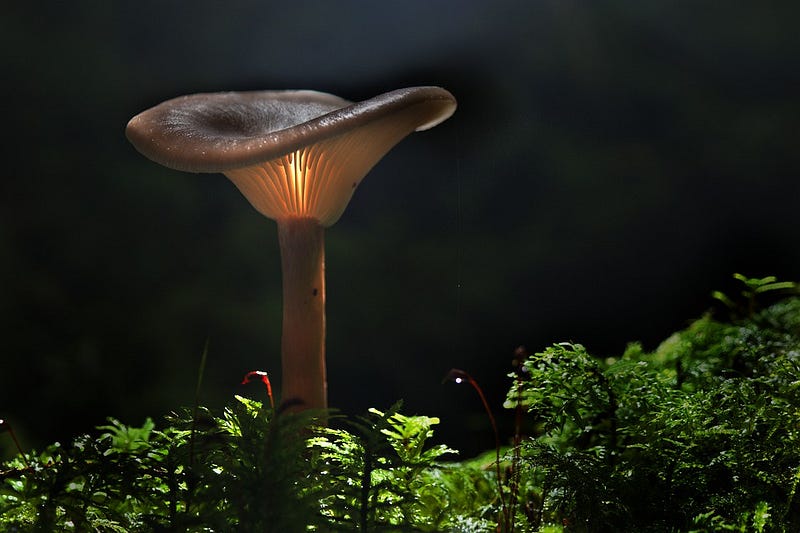From Shrooms to Structures
By Anushka Biswas, Cell and Molecular Biology, 2023

Mycelium (noun): the vegetative part of a fungus consisting of a network of fine white filaments, better known as the future of sustainable architecture.
With the state of our environment rapidly declining, experts across fields are searching for alternative methods and resources to fortify a greener Earth. After all, growing populations need growing opportunities for housing, but the concrete jungle simply cannot be sustained. Portland cement, a key component of concrete, emits about one ton of carbon dioxide and greenhouse gases for each ton produced. Instead, some architects and civil engineers have diverted their efforts to manufacturing with mushrooms.
Mycelium is the medium through which mushrooms are able to absorb nutrients. But, how can the common, feeble fungus contribute to the next Burj Khalifa?
The future lies in biomimetics, a field dedicated to the production of materials modeled on naturally-occurring biological processes, and mycelium is the vessel to success. In nature, mycelium binds natural particles together, essentially functioning like biological glue. Unlike certain species of fungi, mycelium is multicellular and able to form macro-structures commonly categorized as mushrooms. With human intervention and the proper temperature, humidity, and carbon dioxide conditions, mycelium growth can be controlled to form predictable, desired structures. When the fungus digests organic substrate sourced from agricultural waste, a solid mass is produced. Within one week, a 432 square inch fibrous mycelium sheet is ready to be used for construction, art, or insulation.
In nature, mycelium binds natural particles together, essentially functioning like biological glue.
These fungi features are not only fashionable but functional. Weighing only 43 kg/m³, mycelium bricks can support up to 30 psi. The low-density specifications of mycelium make it astoundingly useful in regions of low support. Despite being comparatively weaker than the 4000-psi-withstanding strength of concrete, on a pound-by-pound basis mycelium reigns superior. Unlike concrete, mycelium can also double as a fire-resistant insulator. Relative to synthetic insulation formed from natural gas, mycelium has increased thermal stability. Mycelium tissue can retain more heat than fiberglass insulation while also being partially-resistant to mold and water. The flesh of the mushroom is also termite-deterring in nature, furthering its application as a practical multipurpose construction tool.
Companies such as Ecoactive, MycoWorks, and Biohm specialize in refining this modern commercial building material. These companies place the mycelium bricks through an accelerated aging process, condensing three years of wind, rain, and humidity exposure into a three-week period. If unweathered and untreated, the inside of the brick will remain strong and intact, but intense weather conditions will speed up the mycelium’s natural decaying process. Properly cared-for bricks have a lifespan of about 20 years in stable conditions. Also, placing two living mycelium bricks side-by-side promotes the spreading of mycelium between the individual units as a form of self-bonding; the building practically assembles itself.
Properly cared-for bricks have a lifespan of about 20 years in stable conditions.
If you wish to see a fungi funhouse in person, the Museum of Modern Art in New York features a 40-foot cylindrical tower made by David Benjamin. But if you’re wondering where the future of industrial mycelium lies, look no further than your local supermarket. Experts are currently prototyping which strain of mushroom has the most durable, favorable conditions for commercialization. Shiitake mycelium forms a thick, protective, leather-like exterior. Meanwhile, oyster mushroom mycelium is even less dense by-the-brick. With an abundance of tutorials and techniques to form mycelium-molding material online, you can grab a pack of portabella and easily join architects in the quest for an eco-friendly alternative.
As a natural colonizer of soil, mycelium is abundantly found in nature, can be returned with zero-waste, and is 100 percent biodegradable. It is imperative that goals of sustainability and reducing our carbon footprint guide future projects or else our structures shall have nowhere left to stand.
